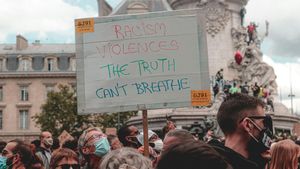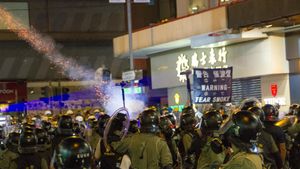With the upcoming 2024 election looming large, Wisconsin has become the focal point of political analysts and citizens alike. The state, known for its swing-vote dynamics, is witnessing flurries of campaign activity as candidates gear up to secure those all-important electoral votes. Recent polls indicate potential shifts and surprises, which are stirring excitement among both political parties.
Historically, Wisconsin plays a pivotal role, often swaying the election's outcome. It is not just the numbers on the scoreboard; the feeling on the ground—whether from green pastures or cityscapes—reflects changing sentiments. One moment, it seems heavily leaning left, and the next, it sways right. This unpredictable nature is precisely why the 2024 election has drawn so much attention.
Leading the charge for the Democrats is the incumbent governor, who is aggressively campaigning on his record of progressive reforms. He aims to drive voter turnout with policies appealing to key demographics, such as college students and urban professionals. His supporters often tout achievements like education funding increases and healthcare initiatives as reasons to keep him in office.
On the flip side, Republicans are equally fired up, rallying around their candidate who aims to appeal to the more rural and conservative parts of the state. Their focus? Inflation and economic growth. They argue voters are more concerned about their wallets than progressive social issues. Recent gatherings show lively crowds who resonate with the candidate's take on economic recovery, expressing their disillusionment with rising prices and economic challenges.
One noteworthy pattern from recent polls has been the significant rise among independent voters, often considered the true deciders in tight races. Many of these voters express deep-seated frustrations with both parties, favoring candidates who promise bipartisan cooperation and tangible results over lofty ideals. Sound familiar? It reflects the behind-the-scenes tension seen throughout the state, with both major parties working diligently to capture this elusive group.
Significantly, voter registration efforts have ramped up, particularly among younger populations. Statewide initiatives aimed at mobilizing young voters underline their potential to shift the electoral dynamics. Supporters of various causes, including environmental sustainability and social justice, are increasingly registering to vote, which could have huge implications for turnout.
This fuel behind voter registration is not without its challenges. From misinformation campaigns to the usual hurdles at polling places, there’s no shortage of obstacles articulated by election officials trying to safeguard the integrity of the voting process. Measures are still being put in place to tackle these challenges, ensuring votes can be cast and counted safely come election day.
Interestingly, the role of technology is being closely watched this election. Social media, once again, wields incredible influence, acting as both megaphone and battleground for political discourse. Candidates are utilizing platforms like TikTok and Twitter to reach younger audiences, creating viral moments along the way. Critics, though, caution about the dangers of misinformation spreading through these channels, reminding voters to be alert and informed.
Yet, beyond the noise of campaign ads and debates, there’s the question of voter engagement. Local groups are hosting town halls, town meetings, and informal discussion panels aimed at clarifying the candidates’ stances and encouraging citizen involvement. They believe showing up is fundamentally the first step toward informed voting. It’s grassroots democracy at its best and also serves as reminder of what’s at stake.
One cannot overlook the influence of prominent issues bubbling under the surface of this election. Gun control, abortion rights, and healthcare remain at the forefront as candidates try to craft messages around these topics. Notably, Wisconsin’s history with these issues often energizes voters, making them attend the polls not just for candidates but for causes they believe deeply about.
On the flip side, as Republicans hammer away at crime and safety narratives, they aim to provoke urgency among voters who prioritize safety over social justice reforms. This balancing act between addressing contemporary society’s concerns and tapping older themes such as law and order is crafting the battleground for Wisconsin's electorate.
From countless rallies, community discussions, and media appearances to debates and town halls, every corner of Wisconsin is being traversed by candidates determined to make their voices heard. Wisconsin's terrain might be scenic, but right now the real beauty lies within the upswing of civic engagement and political dialogues sprouting all around.
Polling data suggests this race might be too close to call, causing anxiety across both party lines. The outcomes will decidedly hinge on which party successfully engages voters, particularly through outreach efforts targeting communities of color and young voters. Traditional bases are important, but with shifting demographics, the surprises could emerge from unlikely places.
With timelines tightening as Election Day approaches, anticipation thickens. Each political party is racing against time to finalize strategies aimed at mobilizing voters across communities and leveling the playing field. What remains clear is Wisconsin's standing as the swing state to watch—its election results will likely set the tone for the rest of the nation come 2024. So, what’s the key to unlocking Wisconsin's electoral potential? It’s anyone's guess.



